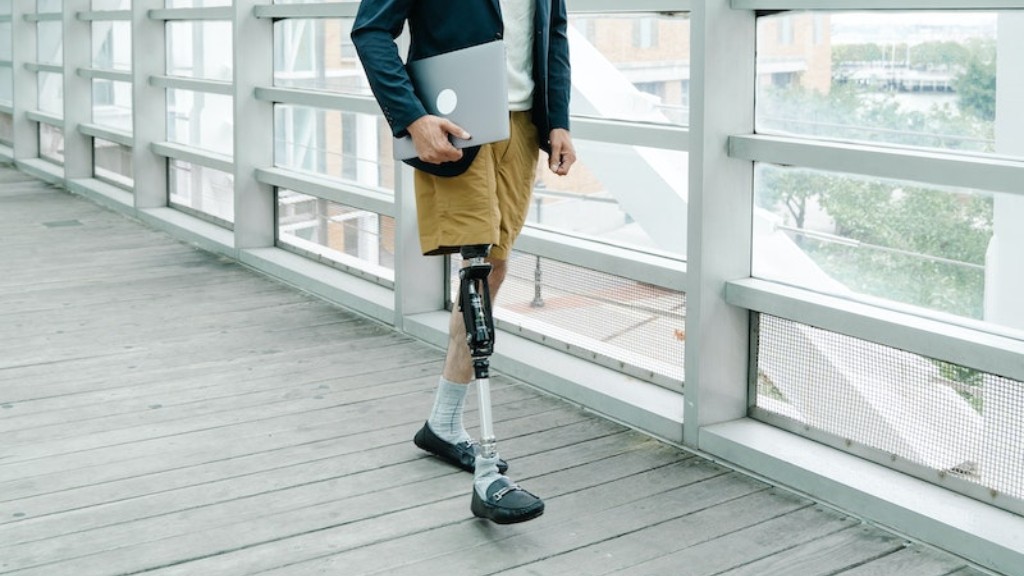Prosthetic Limb: A Canvas of Ceramic Art
In recent years, the intersection of art and technology has given rise to numerous innovations that challenge conventional notions of beauty. One such innovative concept is the idea of incorporating painted ceramic on prosthetic limbs. When contemplating this development, it is essential to consider both the positive and negative implications it may entail.
The Artistic Expression of Ceramic Prosthetic Limbs
The use of ceramic on prosthetic limbs presents an opportunity for individuals to express their identity and creativity. By incorporating hand-painted designs and patterns, prosthetic limbs can become personalized works of art that empower wearers to embrace their uniqueness. This artistic expression offers a psychological boost by promoting self-esteem and a sense of belonging.
Moreover, the use of ceramic allows for the inclusion of intricate details and vivid colors that cannot be replicated by other materials. Its durability and resistance to wear and tear make it an ideal canvas for artistic creations that stand the test of time. Examples of beautifully designed ceramic prosthetic limbs can be found worldwide, portraying an array of cultural symbols and impactful paintings that extend beyond traditional aesthetics.
Enhancing Social Integration through Visual Appeal
Another significant advantage of incorporating ceramic art into prosthetic limbs lies in its potential to enhance social integration. People with prosthetic limbs often face societal stigma and discriminatory attitudes. However, the incorporation of vibrant ceramic designs can shift the focus from the disability to the artistry, creating a positive and engaging interaction with others. This shift in perception fosters inclusivity and promotes greater acceptance, ultimately breaking down barriers and prejudices.
A recent study by the International Journal of Art Therapy found that individuals wearing painted ceramic prosthetic limbs reported an increased sense of social connection and reduced levels of self-consciousness. The researchers concluded that the visual appeal of these artistic creations played a crucial role in shaping positive interpersonal experiences and combating the isolating effects of disability.
Considerations for Practicality and Safety
While the concept of prosthetic limbs adorned with painted ceramic holds great promise, it also raises important practical considerations. One major concern is the impact of the extra weight and possible fragility of the ceramic material. Traditional prosthetic limbs are engineered for comfort and functionality, and the addition of ceramic could compromise these fundamental aspects.
Additionally, the process of attaching ceramic to prosthetic limbs may require specialized techniques and additional maintenance. If the ceramic layer becomes damaged, it could pose risks to the wearer and necessitate frequent repairs or replacements. Thus, it is crucial to strike a balance between aesthetics and the practicality of the prosthetic limb to ensure its functionality and safety are not compromised.
Exploring Personal Preference and Choice
While the incorporation of painted ceramic onto prosthetic limbs offers numerous benefits, it is crucial to consider the individual’s preferences. Some wearers may prefer a more discreet and inconspicuous prosthetic limb, choosing functionality over aesthetics. By providing a range of options, from plain to artfully adorned, individuals can select the option that aligns best with their personal tastes and needs.
Dr. Sarah Rodriguez, a leading prosthesis specialist, stresses the importance of consent and personal autonomy in the selection process. She states, “Allowing individuals to choose the appearance of their prosthetic limbs empowers them to reclaim their bodies and redefine societal expectations.”
Promoting Accessibility and Affordability
One potential drawback of ceramic prosthetic limbs is the increased cost associated with the materials and artistic labor involved. Accessibility to these artistic creations could be limited for those with lower income or limited access to healthcare services. In order to ensure inclusivity, it is essential to address the affordability concerns associated with painted ceramic prosthetic limbs, making them accessible to individuals from diverse socio-economic backgrounds.
The development of cost-effective manufacturing techniques and collaborative efforts between artists and prosthetists can pave the way for affordability without compromising artistic quality. Initiatives such as community-based art centers and non-profit organizations have already emerged to support individuals in accessing artistic prosthetic limbs at more affordable prices. These endeavors promote a more equitable distribution of resources and ensure that artistic expression through prosthetic limbs is not confined to the privileged few.
The Future Outlook
The integration of painted ceramic onto prosthetic limbs represents a powerful convergence of art, technology, and personal identity. By transforming what was once perceived as a mere functional device into an artistic canvas, individuals are given a means to express themselves and challenge societal norms simultaneously.
As this concept continues to evolve, it is essential for artists, scientists, and medical professionals to collaborate in order to further refine the balance between aesthetic innovation and practical functionality. By considering the perspectives of wearers and incorporating their feedback, the future of prosthetic limbs can be shaped in a way that honors individuality, promotes inclusivity, and fosters empowerment for all.
Further Food for Thought
Reflecting on the potential of painted ceramic prosthetic limbs, we are reminded that the impact of art goes beyond aesthetics. It has the power to reshape perceptions, challenge societal norms, and empower individuals. By incorporating art into innovative technologies like prosthetic limbs, we can redefine disabled body narratives and create a more inclusive society that embraces diversity. The question remains: How can we continue to foster these developments and ensure their accessibility for all?



